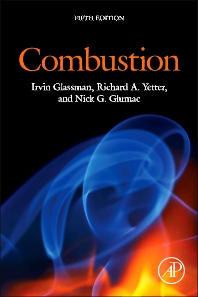Books in Chemical thermodynamics
Books in Chemical thermodynamics
- 2nd Edition
- Volume 6
- March 12, 2018
- Sergey Vyazovkin + 2 more
- English
- Paperback9 7 8 0 4 4 4 6 4 0 6 2 8
- eBook9 7 8 0 4 4 4 6 4 0 6 3 5

Handbook of Thermal Analysis and Calorimetry
- 1st Edition
- January 25, 2018
- Lixing Zhou
- English
- Paperback9 7 8 0 1 2 8 1 3 4 6 5 8
- eBook9 7 8 0 1 2 8 1 3 4 6 6 5

Theory and Modeling of Dispersed Multiphase Turbulent Reacting Flows
- 1st Edition
- November 13, 2017
- Stanislaw Sieniutycz + 1 more
- English
- Paperback9 7 8 0 1 2 8 1 3 5 8 2 2
- eBook9 7 8 0 1 2 8 1 3 5 8 3 9

Optimizing Thermal, Chemical, and Environmental Systems
- 2nd Edition
- March 28, 2017
- Yoshikata Koga
- English
- Paperback9 7 8 0 4 4 4 6 3 6 2 9 4
- eBook9 7 8 0 4 4 4 6 3 6 3 0 0

Solution Thermodynamics and Its Application to Aqueous Solutions
- 1st Edition
- March 22, 2017
- Eugene Barsky
- English
- Paperback9 7 8 0 4 4 4 6 3 9 1 9 6
- eBook9 7 8 0 4 4 4 6 3 9 2 0 2

Gibbs' Entropic Paradox and Problems of Separation Processes
- 1st Edition
- Volume 9
- January 31, 2017
- Ø. Johannesen + 1 more
- English
- eBook9 7 8 1 4 8 3 2 9 1 0 1 7

Selected Topics in High Temperature Chemistry
- 1st Edition
- September 7, 2016
- Jean-Paul Duroudier
- English
- Hardback9 7 8 1 7 8 5 4 8 1 7 8 9
- eBook9 7 8 0 0 8 1 0 1 7 8 5 2

Liquid-Liquid and Solid-Liquid Extractors
- 5th Edition
- November 24, 2014
- Irvin Glassman + 2 more
- English
- Hardback9 7 8 0 1 2 4 0 7 9 1 3 7
- eBook9 7 8 0 1 2 4 1 1 5 5 5 2

Combustion
- 1st Edition
- December 21, 2013
- Vladimir Anikeev + 1 more
- English
- Hardback9 7 8 0 4 4 4 6 2 6 9 6 7
- eBook9 7 8 0 4 4 4 6 2 6 9 7 4

Supercritical Fluid Technology for Energy and Environmental Applications
- 3rd Edition
- December 16, 2013
- Yasar Demirel
- English
- eBook9 7 8 0 4 4 4 5 9 5 8 1 2
